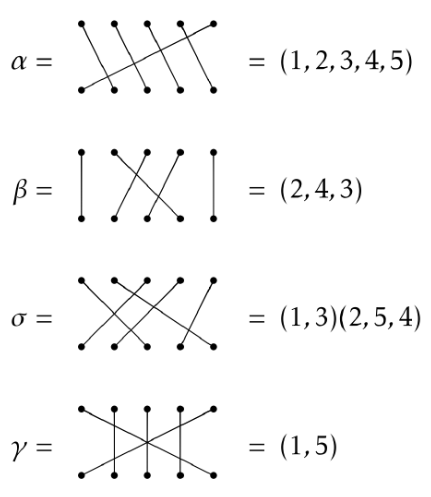Note:
- The set of all permutations on objects is denoted by .
- The set of permutations on objects forms a group under the operation of composition. That is, \((S_n,\circ)\) is a group. Moreover, .
It is the standard convention to omit the composition symbol when writing down compositions in . For example, we will simply write to denote \(\alpha\circ\beta\).
Permutation diagrams are fun to play with, but we need a more efficient way of encoding information. One way to do this is using cycle notation. Consider and in from the previous examples. Below we have indicated what each permutation is equal to using cycle notation.

Each string of numbers enclosed by parentheses is called a cycle and if the string of numbers has length , then we call it a -cycle. For example, consists of a single -cycle, whereas consists of one -cycle and one -cycle. In the case of , we say that is the product of two disjoint cycles.
If an object in position remains unchanged, then we don’t bother listing that number in the cycle notation. However, if we wanted to, we could use the -cycle to denote this. For example, we could write . In particular, we could denote the identity permutation in using . Yet, it is common to simply use to denote the identity in for all .